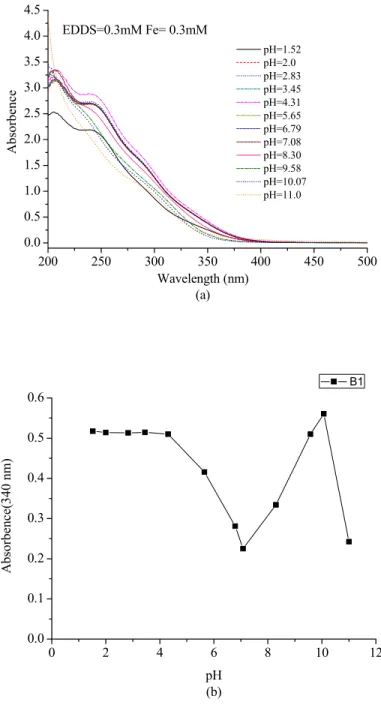Part of my work was carried out in the Laboratory for Environmental Science under the guidance of Pr. I would also like to express my thanks to all members of the laboratory, Madam Benedicte MAILHOT, Mrs.
Introduction
Because it is highly selective and systemic, this herbicide is transported through the plant, accumulating in growing roots, inhibiting weed growth. The quantum yields of Fe(II), 2, 4-D formation and atrazine disappearance were determined in the present study.
Bibliography study
Photochemical properties of iron and goethite in environment
Irradiation with light up to 580 nm leads to the photoreduction of dissolved ferric iron to ferric iron (Bauer R. et al., 1999). It has also been successfully applied to wastewater with a high organic load ranging from 10 g L-1 to 20 g L-1 total organic carbon (Sigman et al., 2004).
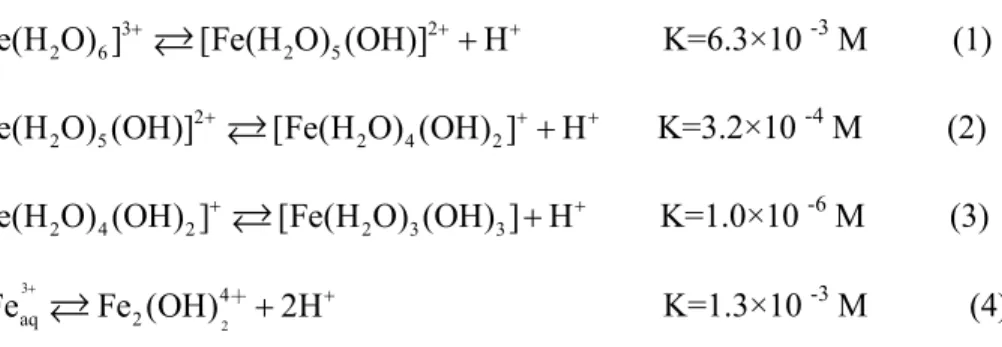
Iron oxides in the natural environment
Goethite is the most abundant iron oxide in nature (Bigham et al., 2002), whose surface reactivity has been extensively studied. The rate of Fe(II) production by microorganisms depends on the surface area of the ferric (hydr)oxide in contact with microorganisms (Bonneville et al., 2006).
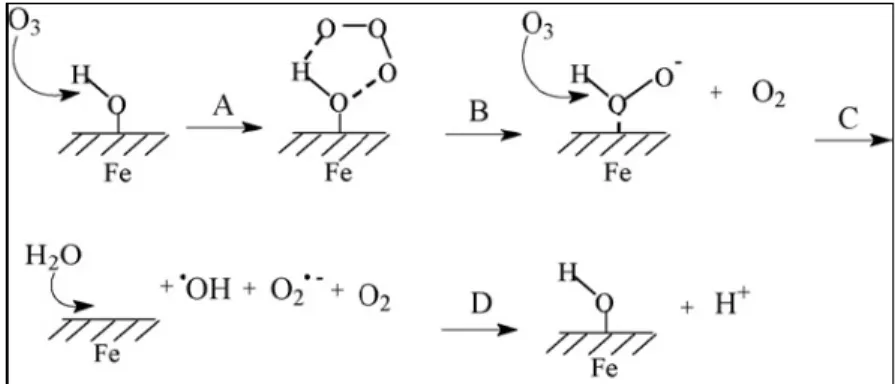
Fe(III)-EDDS complex
Carboxylic acids are considered to be one of the dominant classes of organic compounds found in the atmosphere in a variety of phases (Chebbi and Carlier, 1996; . Talbot, 1997; Talbot et al., 1995). And in our previous works (Wang et al., 2006), we investigated the photochemical reactivity of Fe(III)-Pyr complexes and determined the amount of •OH produced by the photolysis of Fe(III)-Pyr complexes in aqueous solutions.
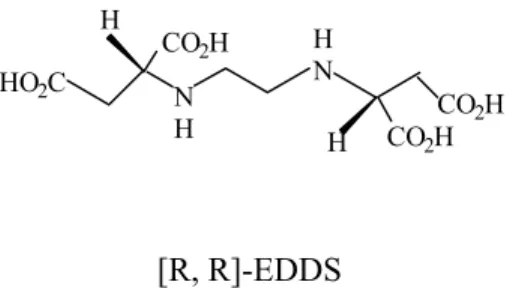
98% of dichlorodiphenyltrichloroethane (DDT) measured in the Canadian Great Lakes has been shown to originate from atmospheric deposition (Chan et al., 1994). Previous studies have shown that atrazine degrades better in anaerobic than in aerobic conditions (Kearney et al., 1967).
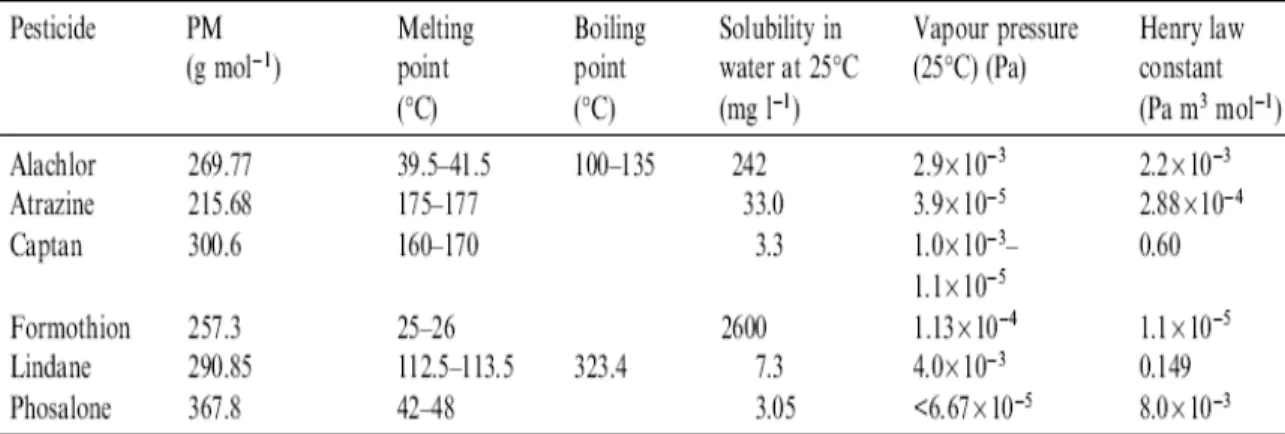
REAGENTS
PREPARATION OF SOLUTIONS
The buffer of acetic sodium was prepared by mixing 600 ml of acetic sodium (1 N) and 360 ml of sulfuric acid (1 N) to a final volume of 1 L by adding an appropriate volume of Milli-Q water. Ammonium buffer was prepared by mixing ammonium acetate solution and 170mL of ammonia (25%) to the final volume of 500mL by adding an appropriate volume of Milli-Q water.
IRRADIATION
The photon flux of monochromatic irradiation at different wavelengths is listed in Table III-C-1. L is the length of the cell used to measure optical density (OD).
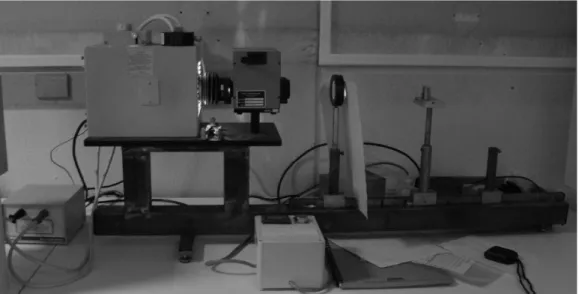
ANALYSIS METHODS
A-physicochemical property of Fe(III)-EDDS complex
Measurements of the composition of complexes formed by Fe(III) and carboxylic acids were carried out using the molar ratio method mentioned in the experimental methods of Part II. 340 nm was chosen as the characteristic absorption of the Fe(III)-EDDS complex: the organic group no longer absorbs at that wavelength and the absorption of Fe(III)-aqua complexes is much lower at pH = 2.0. It is therefore necessary to know the basic properties such as their stability over time at room temperature and the variation of pH.
But the property of Fe(III)-EDDS complex was integrated studied in the previous works, experiments were conducted to study the property of Fe(III)-EDDS complex in this thesis. In order to study the stability of the Fe-EDDS complex, the stock solutions with 2 mmol L-1 Fe(III) and 2 mmol L-1 EDDS were kept in the dark and at room temperature for at least 10 days. Since Fe(III) and EDDS can form stable complex with a 1:1 molar ratio, experiments were performed with the stock solution of the complex.
As shown in Figure IV-A-9, the UV-visible absorption spectra of aqueous solutions containing 0.3 mmol L-1 Fe(III) and 0.3 mmol L-1 EDDS change depending on the change of pH value between 1 .52 and 11.0. Further experiments were carried out and this conclusion was confirmed in the last part of the thesis. Our results show that pH is an important parameter for the stability of the complex and its speciation.
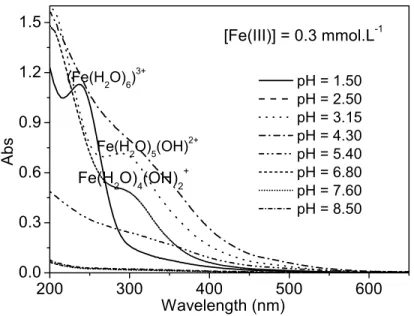
B-Determination of hydroxyl radicals from photolysis of Fe(III)-EDDS complex in
The concentration of production of •OH radicals by photolysis of the Fe(III)-EDDS complex was determined. As shown in Figure IV-B-1, under the conditions of 8 h irradiation and at pH 3.0, the concentration of •OH produced in the system containing the Fe(III)-EDDS complex was 42 µmol L-1. B-2-The effect of pH on the formation of hydroxyl radicals in an irradiated aqueous solution containing Fe(III)-EDDS complex.
•OH concentration increased with an increase in EDDS concentration in the range from 100 to 300 mol L-1. At a given pH value, a change in the Fe(III) / EDDS ratio can lead to a change in the relative content of different Fe(III)-EDDS complexes in the solution. In the present study, formation of phenol from benzene was used to determine the concentration of •OH radicals by photolysis of Fe(III)-EDDS complex.
Results show that the pH value has a great effect on the photolysis of Fe(III)-EDDS complex in the production of •OH. Results show that the concentration of •OH in the solution containing Fe(III)-EDDS complex is higher than that of the system containing only Fe(III) ([Fe(III)] = 300 µmol L-1). It was confirmed that EDDS has positive effects on the photogeneration of •OH in the aqueous solution.
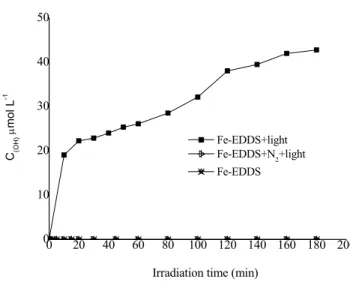
Photodegradation of 2, 4-D photoinduced by the Fe(III)-EDDS complex and goethite-EDDS
Photodegradation of 2, 4-D induced by the Fe(III)-EDDS complexe
Therefore, the quantum yields of 2, 4-D degradation (Φ2, 4-D) and Fe(II) generation (ΦFe(II)) were calculated with an error of less than 5%. A-2-1-Influence of the irradiation wavelength on the quantum yields of Fe(II) and 2,4-D in Fe(III)-EDDS complex aqueous solution. Effects on the quantum yield of Fe(II) formation and on the quantum yield of 2, 4-D degradation were studied.
It can be concluded that a higher pH value is more favorable for the degradation of 2,4-D in the presence of Fe(III)-EDDS complex. The quantum yields of 2,4-D disappearance were optimal at pH 6.0 in the presence of Fe(III)-EDDS complex. The Fe(III)-EDDS concentration effect on the photodegradation of 2,4-D (0.1 mmol L-1) was studied in an aqueous solution at pH 3.0.
It is clear that the photodegradation efficiency of 2, 4-D increased with increasing concentration of Fe-EDDS complex in aqueous solutions at pH 3. The concentration of 2, 4-DCP in solutions containing 0.6 mmol L-1 Fe (III)-The EDDS complex is higher than in the other three solutions. The formation of Fe(II) is very fast at the beginning of the irradiation, in contrast to Fe(III).
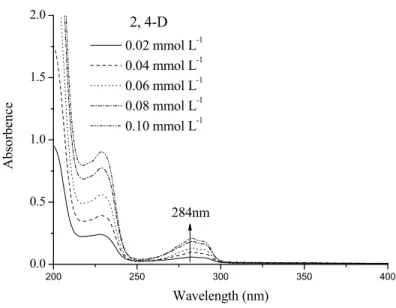
Photodegradation of 2, 4-D induced by the Goethite in the presence of EDDS
Photodegradation of atrazine photoinduced by the Fe(III)-EDDS complex and Fe(III)-pyruvate
Experiments were conducted to study the photodegradation of atrazine induced by the Fe(III)-carboxylate complexes, such as Fe(III)-EDDS and Fe(III)-pyruvate. In this work, both Fe(III) and EDDS were the essential elements for atrazine degradation. In these experimental conditions (pH = 3.0), Fe(III) species appears to be more photoreactive than the Fe(III)-EDDS complex for atrazine degradation.
When the concentration of EDDS decreases from 0.3 to 0.1 mmol L-1, the complexation of iron is not complete and the degradation of atrazine increases sharply. Moreover, when the concentration of Fe(III) decreases from 0.3 to 0.1 mmol L-1, the degradation efficiency of atrazine is divided by a factor of two. It was found that pH can be an important parameter in the photodegradation of atrazine induced by the Fe(III)-EDDS complex, but after 8 h of irradiation, the percentage of atrazine degraded was the same regardless of the starting pH (35%).
Fe(II) and the formation of active oxygen species, which was the main reason for the degradation of atrazine. For the Fe(III)-EDDS complex, pH 6.0 is better for the photodegradation efficiency of atrazine than pH 3.0. The photogenerated concentration of Fe(II) was slightly smaller with the increase of the initial concentration of atrazine.
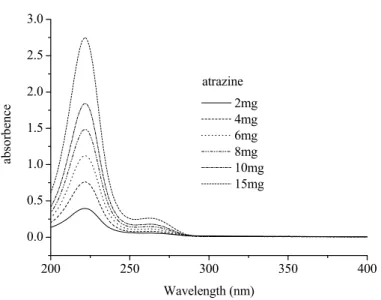
Photodegradation of atrazine in the aqueous solutions containing Fe(III)-Pyr complex
General conclusions
We also checked the stability of the Fe-EDDS complex in the dark and at room temperature. Fe(III)-EDDS is stable in aqueous solutions under our experimental conditions (pH = 3.0 to pH = 6.0). Parameters such as pH, Fe (III) concentration or EDDS, oxygen were all taken into consideration in the study.
This particular point is completely consistent with the disappearance of 2,4-D, which is higher at pH 6.0 than 3.0 in the presence of Fe(III)-EDDS complexes. •OH concentration generated in the system also increased with the increase of Fe(III) or acid concentrations. In the presence of high concentration in oxygen and at pH 6.0, the total degradation of 2, 4-D and photogeneration of 2, 4-DCP is observed after 8 hours of irradiation.
In the presence of goethite particles, the concentration of 2,4-D was almost the same even after 39 hours of shaking in aqueous solutions. In contrast, in the presence of goethite without EDDS, a pH of 3.0 is favorable for the photodegradation of 2, 4-D. The Fe(III)-Pyr complex could enhance the photodegradation of atrazine in aqueous solution and under irradiation.
1-List of tables
2-List of Figures
Effect of pH on the photodegradation of 2,4-D in the presence of Fe(III)-EDDS complex. Effect of pH on Fe(II) photogeneration in the presence of Fe-EDDS complex. Photodegradation of atrazine in Fe(III)-EDDS systems, (a) with different Fe(III) concentrations and (b) with different EDDS concentrations.
Photodegradation of atrazine in Fe(III)-Pyr systems, (a) at different pH values; (b) with different concentrations of Fe(III); (c) with different concentrations of Pyr; (d) with different concentrations of atrazine. Mechanism and kinetics of OH radical intervention during Fenton oxidation in the presence of significant amount of radical scavenger (Cl-). Degradation of nitrobenzene and nitrophenols by AOP in a homogeneous phase: photolysis in the presence of hydrogen peroxide compared to the Fenton reaction.
Reaction kinetics of hydrogen peroxide with copper in seawater: Implications for its existence in the marine environment. Recent developments in the coupling of photo-assisted and aerobic biological processes for the treatment of biorefractory compounds. Evidence for the existence of different physiological groups in the microbial community responsible for 2, 4-D mineralization in soil.
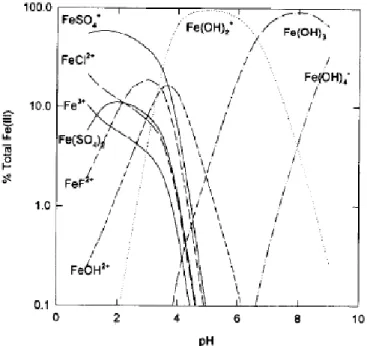
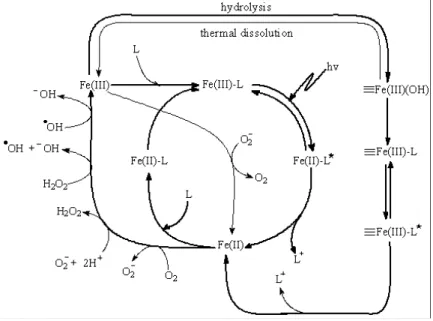
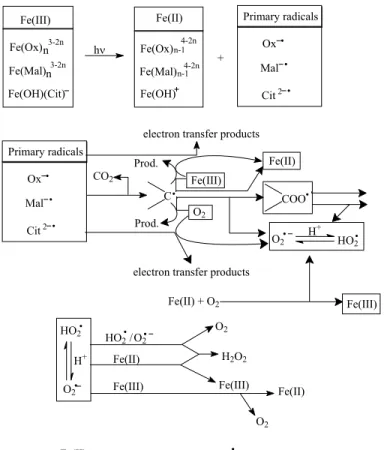
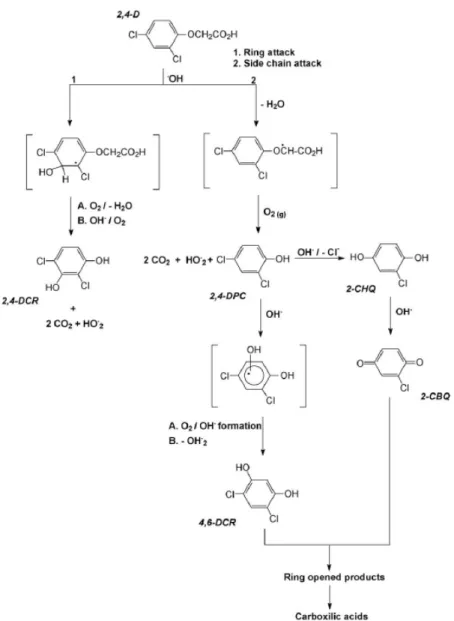
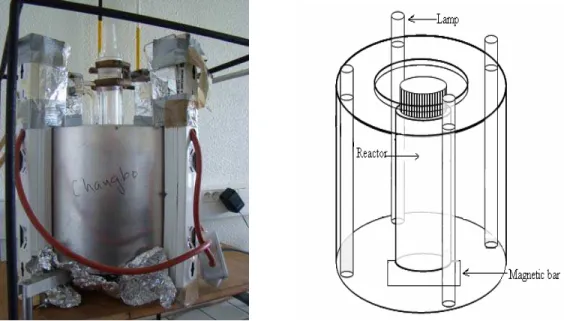
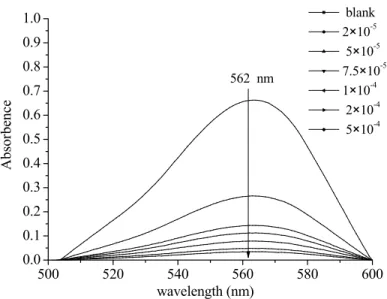
![Figure IV-A-3 the UV-visible spectra of EDDS ([EDDS]=1 mol L -1 ).](https://thumb-eu.123doks.com/thumbv2/1bibliocom/464381.69895/76.918.286.674.653.958/figure-iv-uv-visible-spectra-edds-edds-mol.webp)
